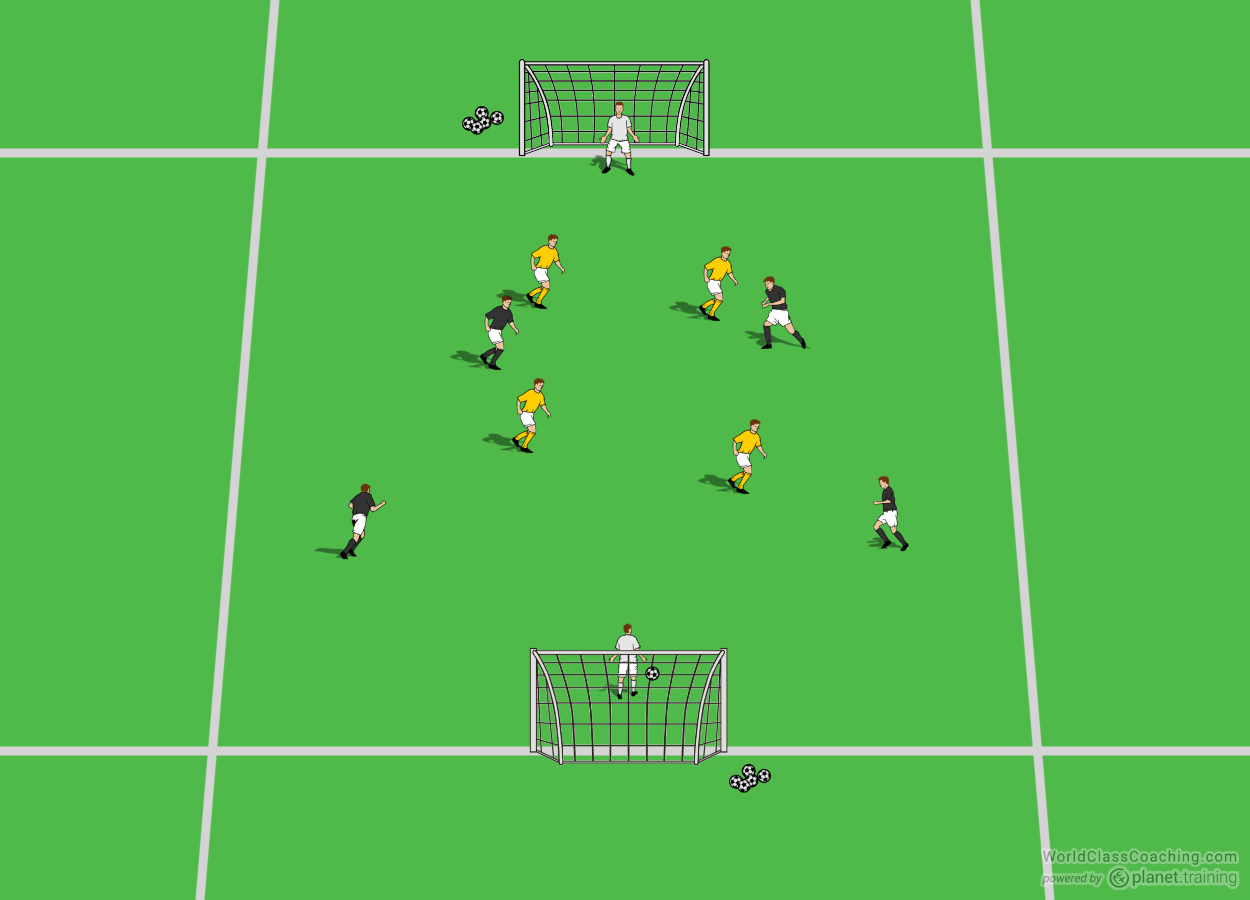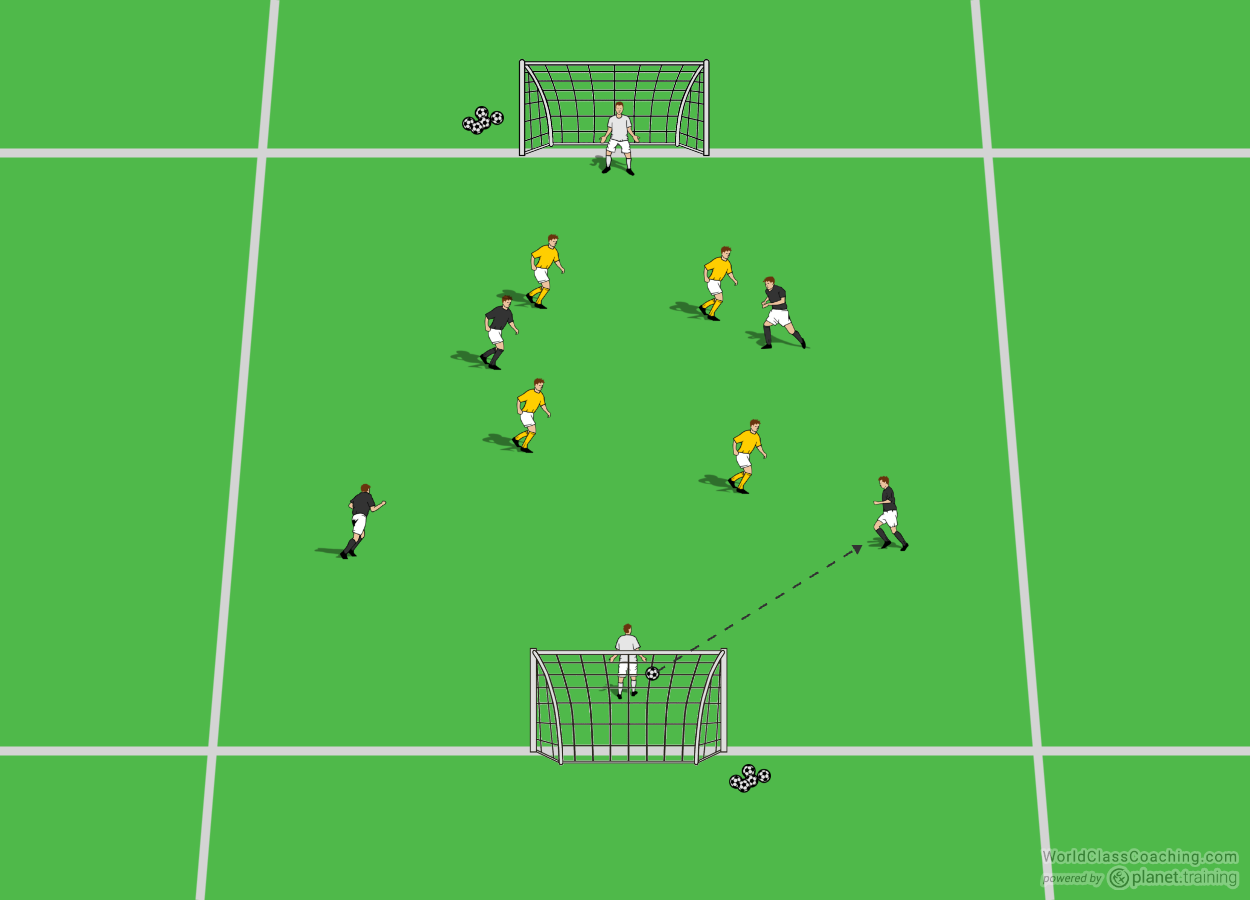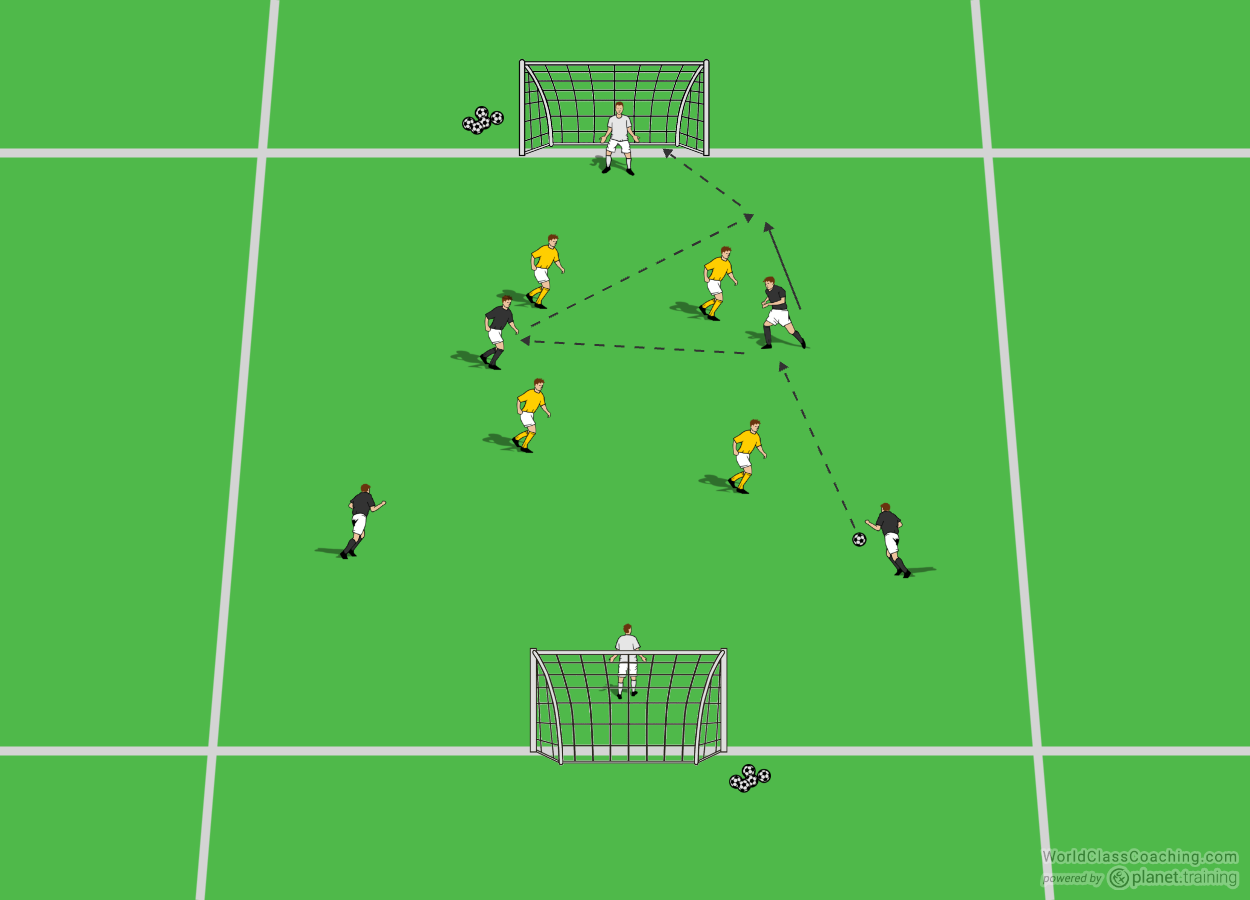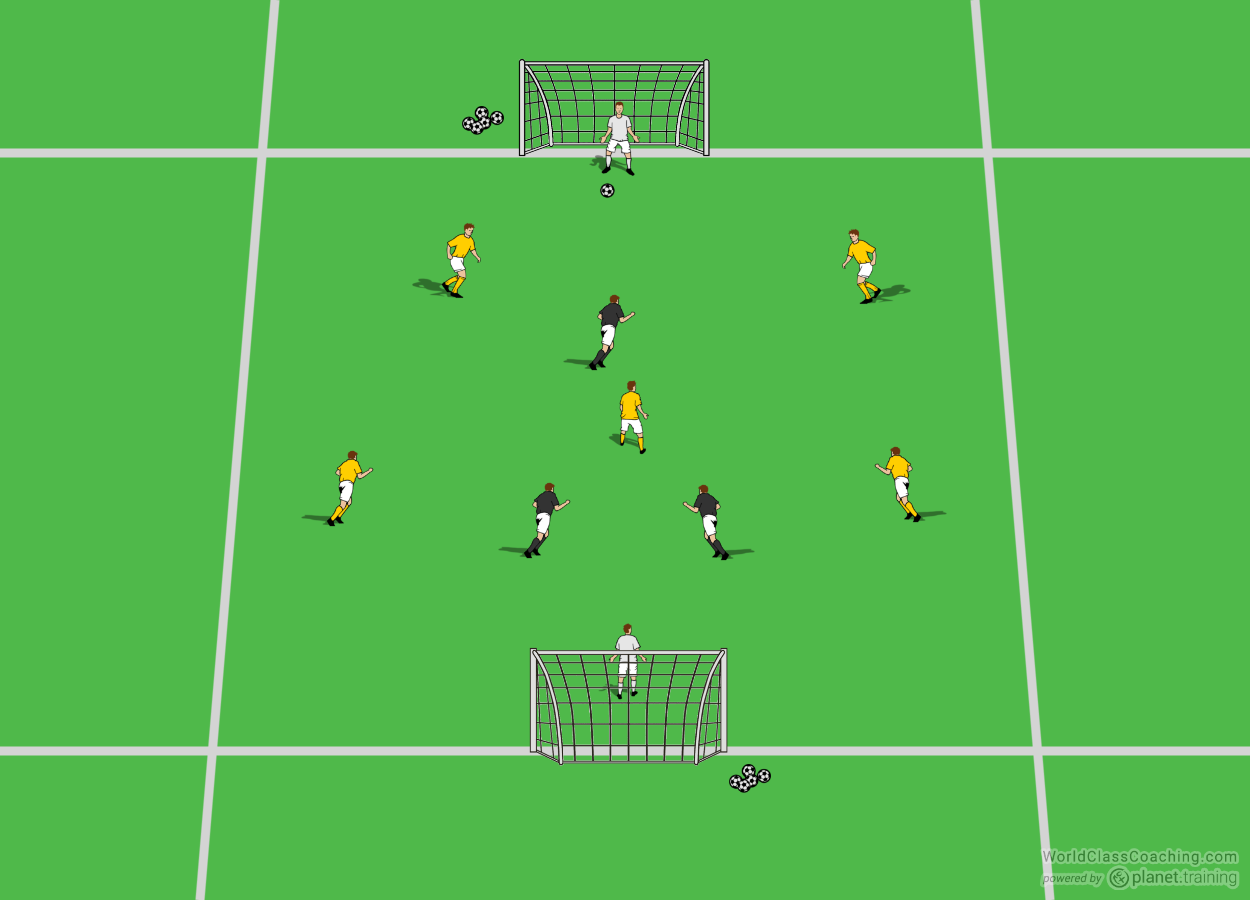By Alex Trukan
This game is designed to improve players’ aerobic power which is responsible for the ability to produce more actions throughout the game. This will help players to be engaged and affecting the game right until the end of it. From the tactical point of view, it incorporates overload and underload scenarios which challenge players in and out of possession. It also stretches players technically. For example, in a 3v5 situation, the attackers will be forced to stay on the ball under higher pressure from the defenders what will develop their ball manipulation as well as dribbling. Number up/down game is high intensity practice mainly aimed towards intermediate and advanced players.
Set up and directions
Organise a pitch of approximately 20 x 30 yards with two medium sized goals. Divide the group into two teams of four (number can be adapted to suit requirements). Organise goalkeepers in goals. Prepare a sufficient supply of balls to ensure intensity and flow of the practice.

The game starts with one of the goalkeepers who passes the ball into one of the players from his team. The aim of both teams is to score into opposite goals. Regular rules of football apply. There is no corners – the game restarts from the goalkeeper.

Both teams should try to score as soon as possible. Intensity of the game should be reinforced. One of the ways to do that is limiting time for restarts (i.e. throw-ins, goal kicks) to 5 seconds.

If one of the teams scores, one of their players joins the opposition team. This is the main rule of the game which will ensure overload/underload scenarios. After that, the game restarts from the goal of the team that has just conceded. The team that scores two/three times in a row wins the game.

Timing
The game should be played 1-3 minutes and repeated 6-10 times in 2 series. The rest period between repetitions should be 1-3 minutes and between series – 4 minutes.
Variations
- 5v5/6v6/7v7
- Team has to make certain amount of passes before they can score
- Team that scores 2/3/4 times in a row wins (depending on numbers)
By Alex Trukan, Development Coach, Nottingham Forest
@AlexTrukan


